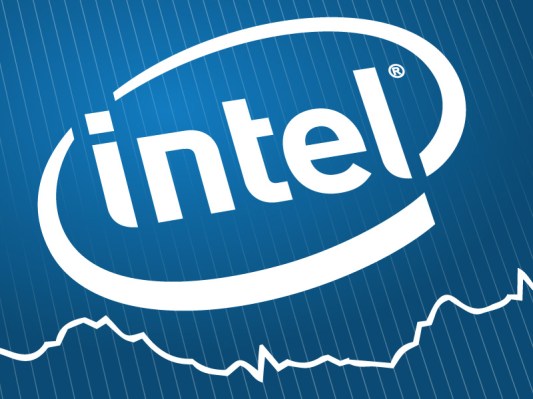Intel — the world’s largest chipmaker — reported its Q4 earnings today after the close of trading. The company appeared to beat estimates with revenues of $14.9 billion and earnings per share of $0.74. Analysts on average were expecting EPS of $0.63 on revenues of $14.8 billion.
Despite the surprise boost especially on EPS, Wall Street is not happy with the numbers: the company’s stock is down more than 5% in after-hours trading. One clue might be in the forecasts: Intel also posted a weak outlook for the quarter ahead, with GAAP revenues of only $14.0 billion, plus or minus $500 million, and a weaker gross margin of 58% and some other weak growth points.
For comparison, today’s figures are level with 2014 Q4 EPS of $0.74 and only slightly above sales of $14.72 billion for the quarter a year ago.
Intel’s full-year results — also posted today — were $55.4 billion. This is also down compared to a year ago, with operating income of $14.0 billion, net income of $11.4 billion and full-year EPS of $2.33.
As PC sales continue to decline globally, Intel has been in the midst of a transition to a new generation of products, which it says is bearing fruit.
“Our results for the fourth quarter marked a strong finish to the year and were consistent with expectations,” said Brian Krzanich, Intel CEO, in a statement. “Our 2015 results demonstrate that Intel is evolving and our strategy is working. This year, we’ll continue to drive growth by powering the infrastructure for an increasingly smart and connected world.”
Intel said last quarter that it expected Q4 revenues of $14.8 billion, give or take $500 million. It also anticipated a restructuring charge of $25 million as it continues to transition to new waves of business.
While Intel says it is making the transition to newer areas of business, it’s slow going. For the quarter, Intel’s business units break down like this:
The Client Computing Group posted revenue of $8.8 billion, up 3% sequentially but down 1% year-over-year.
The Data Center Group had revenue of $4.3 billion, up 4% sequentially and up 5% year-over-year.
The Internet of Things Group had revenue only of $625 million, up 8% sequentially and up 6% year-over-year.
Software and services operating segments had revenue of $543 million, down 2% sequentially and down 3% year-over-year.
The Non-Volatile Memory Solution Group revenue was flat sequentially and up 10% year-over-year.
The world’s biggest chipmaker is making a big bet on putting itself at the core of a number of other devices beyond the PC. During the Consumer Electronics Show earlier this month, the company opened the show with its keynote, where its CEO showed off Intel’s many advances in building processors and other technology to work on anything but a PC — from wearables through to music and industrial equipment. Intel’s stand at the show — a huge installation with multiple hands-on demonstrations of the technology — continued to relay the message.
You can see the PC trend playing out in Intel’s other activities. The company’s VC arm Intel Capital has been making investments in areas like robotics, gaming companies, and drone makers (sometimes subsequently acquiring those investments) — all areas that are strategic for the company as potential platforms for Intel’s products, from chips to imaging technology.
But while products like RealSense — Intel’s powerful image and gesture recognition tech — give Intel a shot at diversifying into more areas down the line, the company is also continuing to double down on its core product. Earlier this month the company completed its biggest-ever acquisition, paying $16.7 billion to buy Altera, which also makes processors for a variety of products. For Intel, Altera may be a chipmaker, but also part of a new generation that could help Intel advance further into another emerging area of computing: connecting disparate objects in the Internet of Things.
More to come.
